| Monash home | About Monash | Faculties | Campuses | Contact Monash |
| Staff directory | A-Z index | Site map |
| Monash home | About Monash | Faculties | Campuses | Contact Monash |
| Staff directory | A-Z index | Site map |
|
2009 Dinosaur Dreaming update2009 Annual Report2009 Dinosaur Dreaming excavation updateThe 17th annual Dinosaur Dreaming field season gets under way on the 1st February 2010. The dig will again concentrate on the main excavations at the Flat Rocks site, continuing on from where we left off last summer. The field season will last for four weeks and our last excavating day will take place on the 26th February. Anyone wishing to visit the site during the field season should check out the low tide times as we only have access to the fossil layer 3-4 hours either side of low tide. The closest car park is at “The Caves”, approximately 5kms outside Inverloch along the Cape Paterson Road. More information about the dig can be found at the Inverloch Environment Centre or any of the Bass Coast Information Centres. Preparation and research into the fossil bones and teeth found during the Dinosaur Dreaming 2009 field season has produced some interesting results:
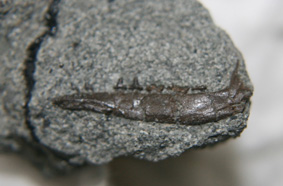 Jacqui's mammal jaw More than 500 fossils were catalogued during the four week dig at Inverloch, including one more mammal jaw, bringing our total to 46. The jaw was found by Jacqui Tumney, a La Trobe University PhD student, who has been part of the dig for the last 4 years. This is her first mammal jaw and it is one of the best that has yet been found. Congratulations, Jacqui.
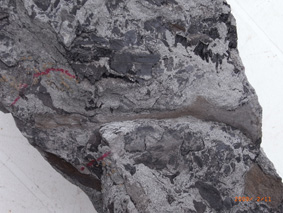 Ischium from an ornithopod or plant-eating dinosaur Some nice dinosaur bones were also found during the 2009 field season, including a well preserved ischium (part of the hip) of a small ornithopod or plant-eating dinosaur. These bones are quite fragile and tend to break up easily, so to find one so well preserved and complete is a real find.
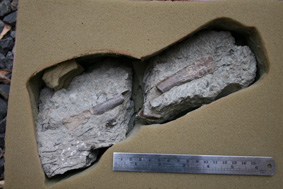 Ornithopod dinosaur tibia A number of leg bones from ornithopod dinosaurs were also recovered, including this tibia. Both ends are quite abraded indicating that it may have travelled some distance in the water column before eventually being deposited in the bottom of the channel.
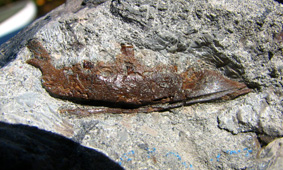 Lower jaw of a small dinosaur found by Norman Gardiner Norman Gardiner, one of our core crew who usually spends the entire field season with us, found a nice ornithopod dentary; part of the lower jaw of a small dinosaur. Over the years we have recovered many dentaries, all from ornithopod dinosaurs. This particular specimen is missing a few teeth, but is otherwise quite complete. The teeth tended to fall out of the jaw as it was transported down river, which is why we find so many individual teeth.
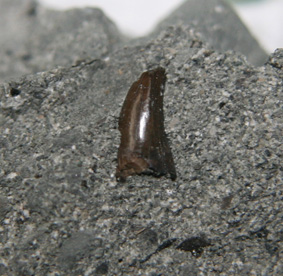 Tooth of a theropod dinosaur On the subject of individual teeth; we once again found a number of isolated small theropod teeth, including this one found by our German volunteer, Mareike Schmidt. We now have over 130 isolated theropod teeth, but no theropod dinosaur jaws. It’s very frustrating.
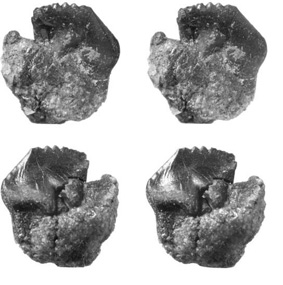 Multituberculate tooth Corriebataar marywaltersae A paper on the multituberculate tooth, found by Mary Walters during the 2004 field season, was published earlier this year. Named Corriebataar marywaltersae in honour of its finder and Dr Corrie Williams of the Monash Science Centre, it is the oldest evidence of multituberculate mammals in Australia.
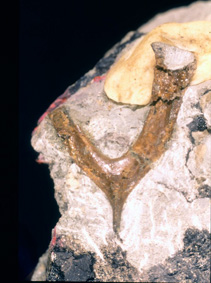 Bird fircula or wishbone Sometimes it takes years for a specimen to be identified and published. Such is the case with a small bird furcula or wishbone, which was found the week prior to the first mammal jaw in 1997. It has taken 12 years for this specimen to take its place on the world’s stage in the form of a short communication in the Journal of Vertebrate Paleontology (Vol. 29, Number 3, pages 616-619). It has been identified as the earliest Gondwanan bird and the first skeletal evidence of birds in the Cretaceous of southeastern Australia. Don’t forget to check out our blog site during the field season |